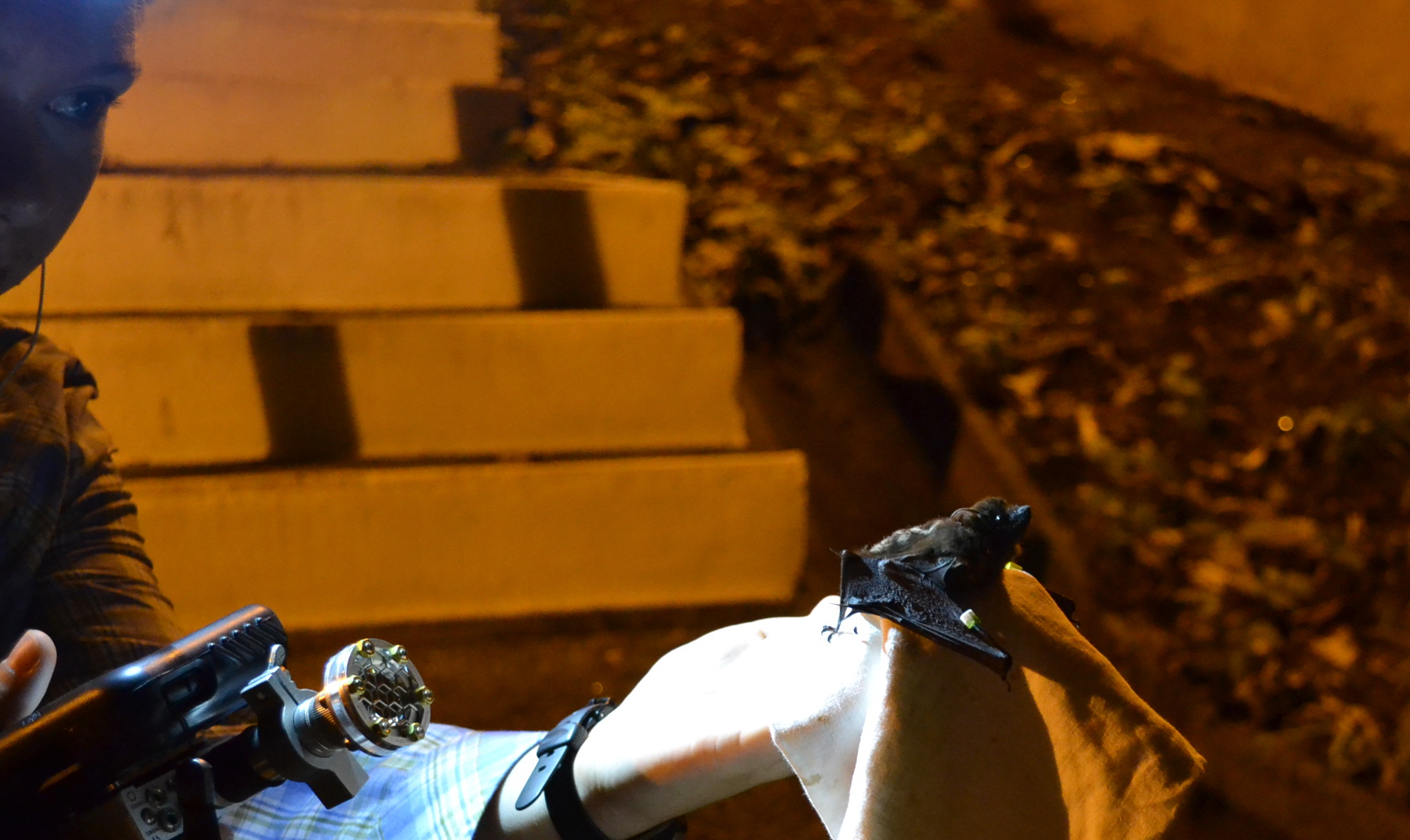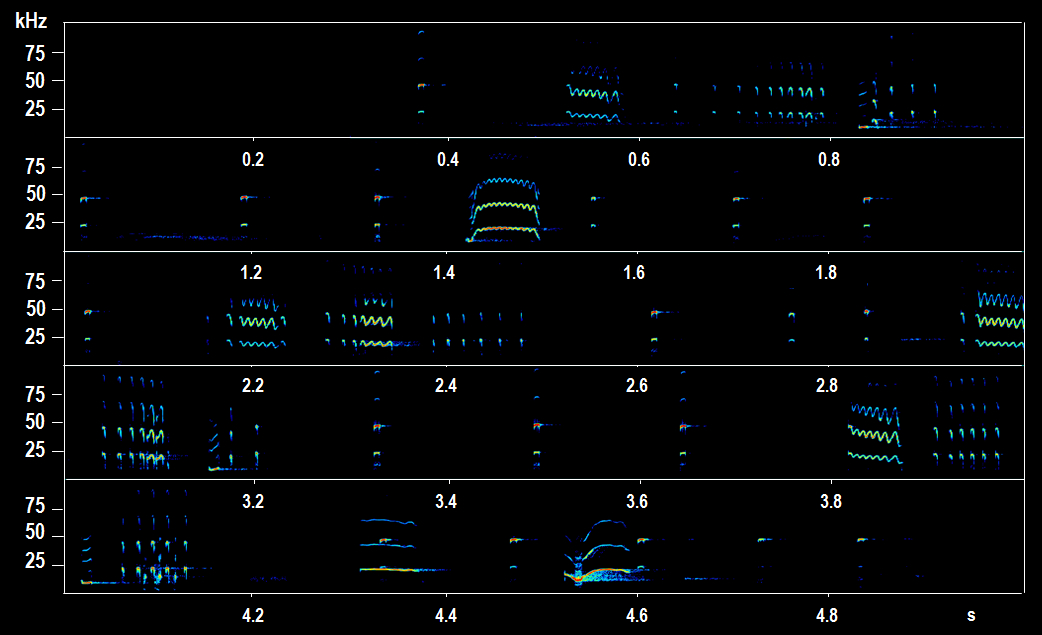Regional differences in the courtship behaviour of male bats
Courtship behaviour demonstrates the willingness to mate and the fitness of the mating partners; thus, it is usually encoded in distinct behavioural patterns (Freeberg 2000). However, courtship behaviour is not only important for mate choice but also for mate-recognition since large differences in courtship behaviour between different, geographically isolated populations can lead to ethnological isolation and, ultimately, to speciation (Bolnick & Fitzpatrick 2007).
My Ph.D. student Maria Eckenweber studies acoustical and visual components of male courtship behaviour in the bat Saccopteryx bilineta and focuses especially on differences between individuals and populations. This is particularly interesting because large differences in courtship behaviour between different populations can lead to ethnological isolation and, ultimately, to speciation (Bolnick & Fitzpatrick 2007). Moreover, Maria studies the cultural transmission of courtship behaviour, i.e. whether courtship behaviour is learned and transmitted from one generation to the next.
 Maria releasing a newly banded Saccopteryx bilineata (© Knörnschild).
Maria releasing a newly banded Saccopteryx bilineata (© Knörnschild).
Male courtship in the greater sac-winged bat Saccopteryx bilineata is complex and consists of multimodal displays, the most conspicuous of which is a stereotypic hover flight in which the male performs displays in the visual, olfactory and auditory domain (Voigt & von Helversen 1999, Voigt et al. 2008).
Hover flight of male Saccopteryx bilineata (© Eckenweber).
Hover flights are embedded in courtship songs that last up to an hour and consist of different syllables (Behr & von Helversen 2004). We are currently decoding the syntactical rules governing syllable composition in courtship songs.
 Courtship song excerpt of a male Saccopteryx bilineata (© Knörnschild).
Courtship song excerpt of a male Saccopteryx bilineata (© Knörnschild).
Listen to the courtship song excerpt (© Knörnschild):
In her thesis, Maria is studying the potential for ethnological isolation in the courtship behavior of three Central-American populations of Saccopteryx bilineata. Moreover, Maria is evaluating whether regional differences in courtship behavior are caused by cultural transmission, genetic effects, or both. Up to now, this has never been studied in bats and only rarely in other mammals (Freeberg 2000).
